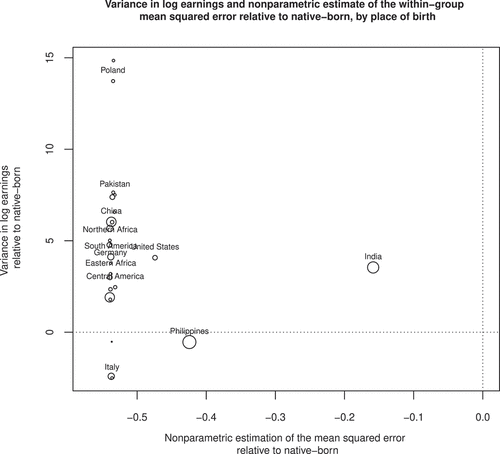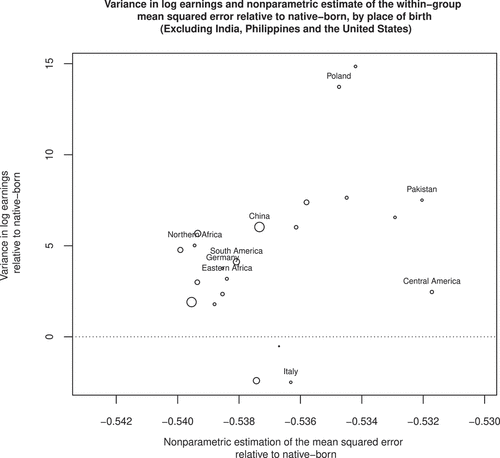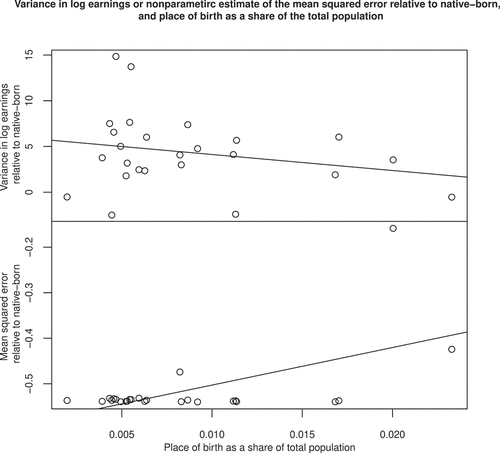Figures & data
Figure 2. The variance in log earnings and mean squared error, by country of birth. The density of the circle represents the share of place of birth population.
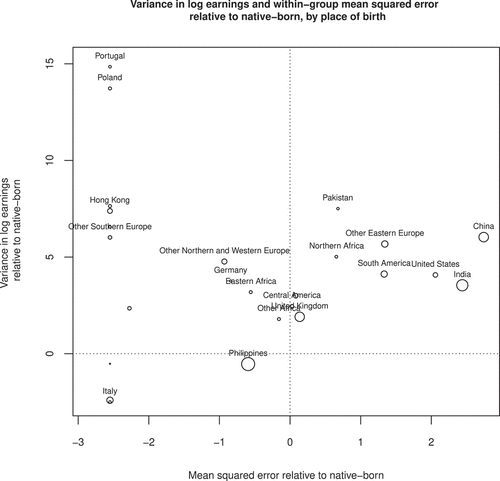
Table 1. List of variables used in the regression model
Figure 3. The variance in log earnings and mean squared error, by the share of place of birth population. The diagonal line is the fitted relationship between variables. Each circle represents the share of place of birth population.
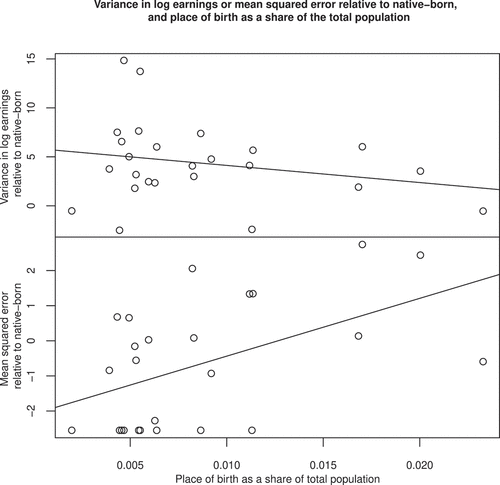
Figure 4. The variance in log earnings and mean squared error, by place of birth. The density of the circle represents the share of place of birth population.
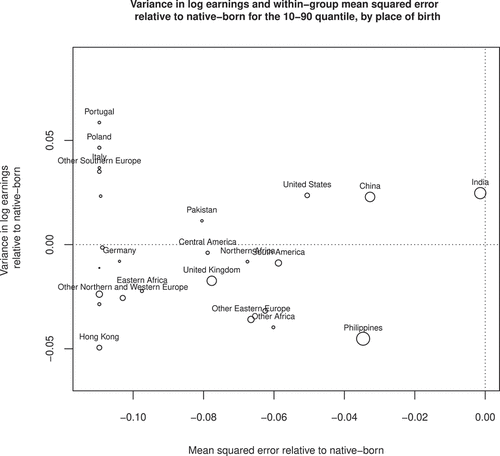
Figure 5. The variance in log earnings and mean squared error, by place of birth. The data is subset to the middle (or 10–90 quantile). The diagonal line is the fitted relationship between variables. Each circle represents a source country group.
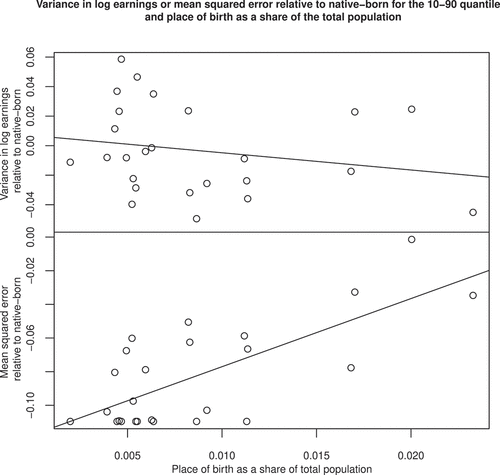
Figure 6. The variance in log earnings and non-parametric estimates of the mean squared error, by country of birth. The density of the circle represents the share of place of birth population.
